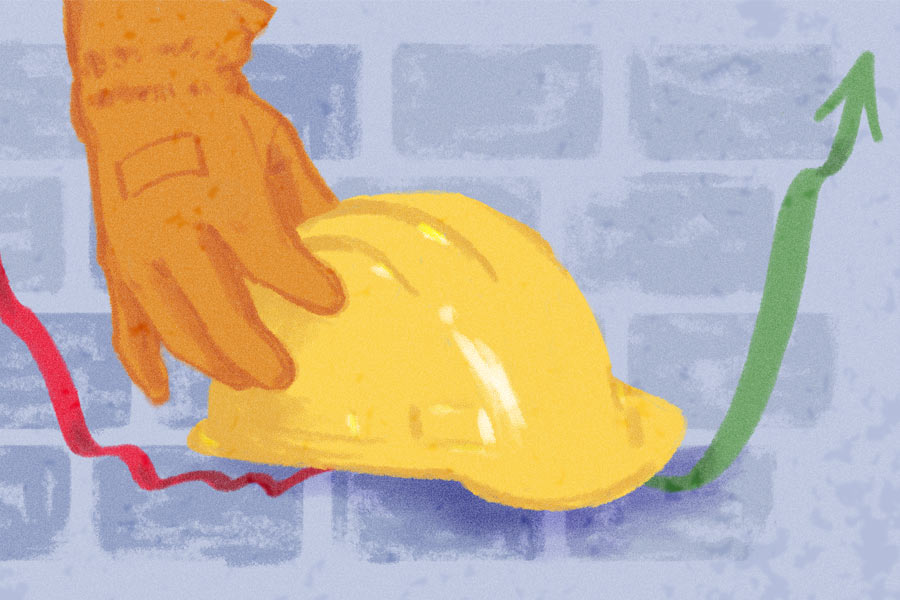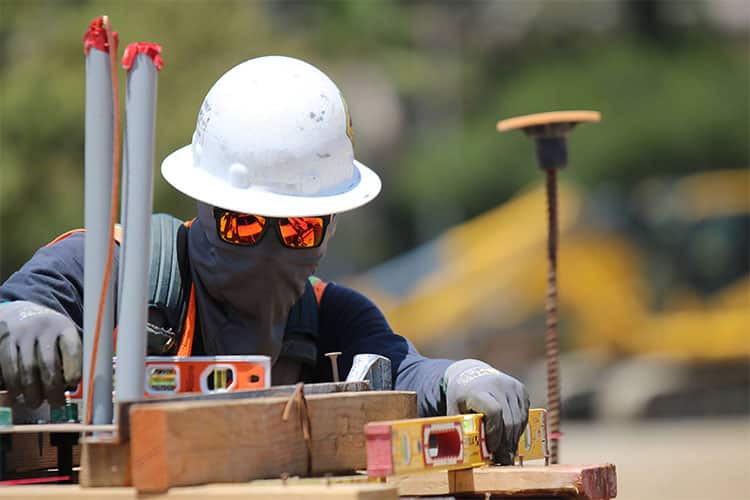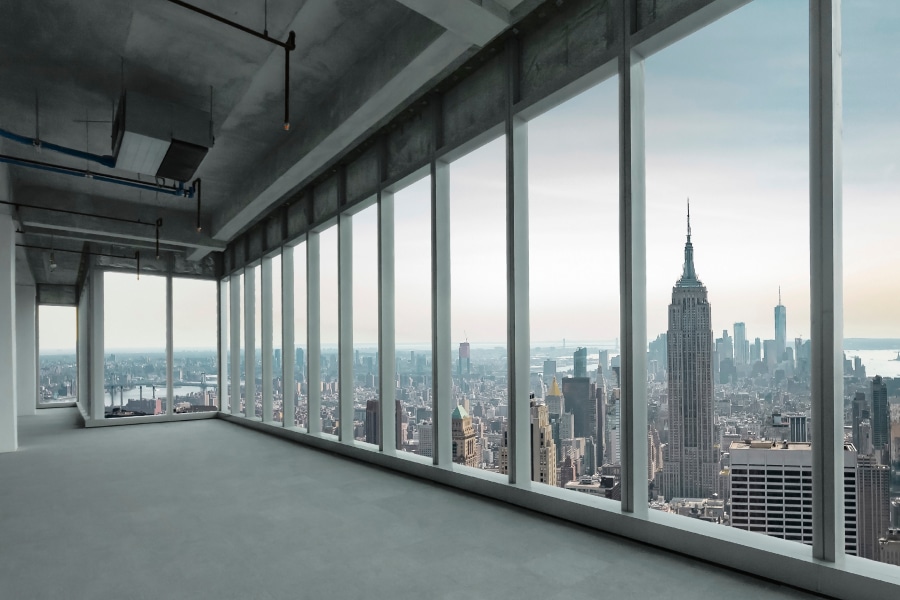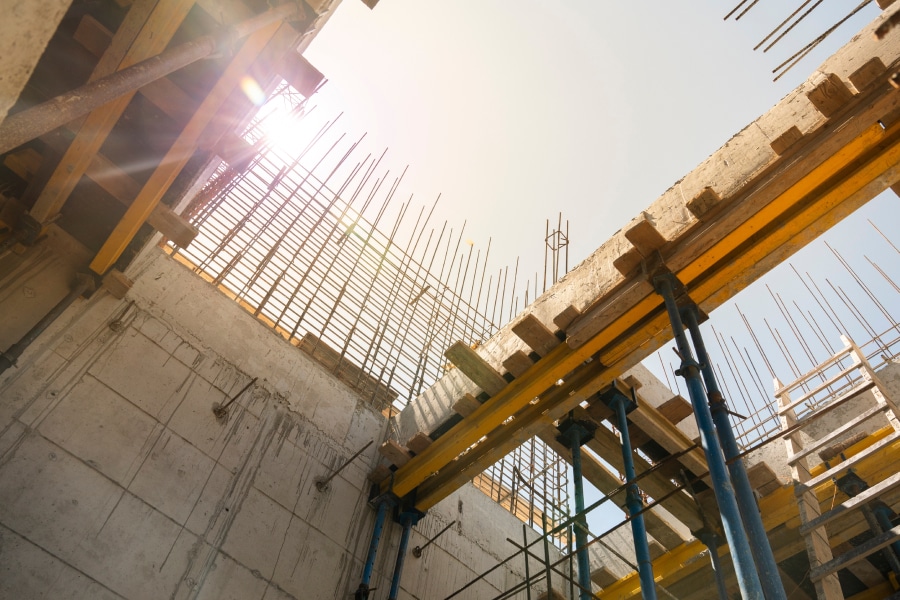Illustration by Nico Abbasi
It’s been more than six months since the COVID-19 pandemic engulfed the world. Industries across the globe have been upended due to the pandemic, particularly in the United States, where the virus hit the hardest.
The construction industry has felt the shifts brought on by the pandemic as well. Quickly designated at the onset as an “essential” business, construction has been forced to carry on under unusual circumstances as new safety measures were instituted on jobsites while most in-office workers spent much of the year working remotely from home.

Still, while the industry was able to carry on as other sectors were forced to cease operations as lockdowns halted much of the economy, it wasn’t without great pains, particularly in the U.S. job market.
Each month, the U.S. Bureau of Labor Statistics (BLS) aims to paint a picture of the positive or negative movement in jobs across industries. The BLS report has become a bellwether of the U.S. economy—something watched closely by economists and covered heavily in the national business media.
In these unprecedented times, the BLS numbers can often be difficult to fully understand, so the Bluebeam Blog went to an expert to uncover how the construction job market has fared since the COVID-19 pandemic hit.
Ken Simonson serves as the chief economist at The Associated General Contractors of America. He also sits on the Bureau of Labor Statistics’ Data Users Advisory Committee. Edited excerpts of our interview with Simonson follow.
Built Blog: Since the pandemic began, what kind of trends have we seen in the construction industry in terms of jobs?
Simonson: It’s certainly been mixed. I would say overall construction has been hit hard. The Bureau of Labor Statistics on construction employment nationally showed a decline of 14%, or 1.1 million jobs, between February and April. But then we saw a quick but partial rebound; as of August, overall the industry had recovered 61% of its lost jobs, compared to less than 50% for the overall economy.
But there’s a big and growing split. Residential construction—homebuilders and remodelers—have added back 81% of the jobs lost. Nonresidential construction—both building and public works—have seen only 46% job recovery.
Built Blog: What is driving that split?
Simonson: I think that nonresidential depends very heavily on owners of all types making decisions about whether—first of all—they have the funding sources to pay for construction, and—second—is the demand going to be there?
If you take the public side, state and local governments and agencies that run on budgeted expenses saw a huge drop in revenue of various types. For instance, highway construction depends heavily on gas and diesel tax, which fell off sharply when driving diminished. Airport authorities have been collecting landing fees and gate rentals from airlines and taxes or rents from passengers in terminals and on airport hotels and rental agencies.
With the tremendous drop in passengers and flights, their revenue situation has been devastated. Similarly, transit agencies have lost passenger fare revenue. How much do they need to add new gates in airports or continue expanding transit lines if people are afraid to get on planes or use the subway?
Residential construction—homebuilders and remodelers—have added back 81% of the jobs lost. Nonresidential construction—both building and public works—have seen only 46% job recovery.
Ken Simonson, Chief Economist, The Associated General Contractors of America
Institutional owners, like universities and colleges, have seen the loss of tuition and student fees, maybe the loss of athletic revenue, and there’s a big question regarding how many students will be or should be on campus. So, for now, they’re pulling back on building new dorms or classrooms or athletic facilities.
Private owners—a business that’s ready to add a new store or restaurant—may find that they’re having to close their doors altogether.
For all of those categories there’s a big question about when construction will come back.
Built Blog: Why is residential different?
Simonson: On the residential side, there has been this huge drop in interest rates. People who still have jobs and continue to be employed see this as a good time to buy a home. They may also feel some urgency if they and their spouse are now working from home and their kids are going to school at home. It may be too crowded for them all to be at work at the same time, so there’s a lot of interest in buying a first home or buying a bigger home depending on what your situation is.
Built Blog: Are we seeing a shift in what types of construction jobs are available in the residential market?
Simonson: I don’t think we’ve seen data that shows which crafts or other types of construction positions are doing better than others. There has been some shift away from multi-family construction to single family, but the multi-family market is not dead. Luxury high-rise buildings in places like New York City and Miami Beach are really struggling, but there’s still a lot of smaller cities and suburban areas that are seeing low- rise and medium-rise apartment construction.
In the broader residential area, the demand is strongest for new construction and remodeling. Steel workers and concrete are probably not growing to the extent that carpenters and plumbers and electricians are.
Built Blog: Have wages moved much during the pandemic?
Simonson: The most frequent measure of wages is average hourly earnings, which is something that the Bureau of Labor Statistics reports on as part of the monthly employment report. But that average has been heavily distorted by the huge loss of jobs, so it’s hard to do like-to-like comparisons.
So, the short answer is no—I don’t think we have information yet on what is happening to wages and workers.
But I will say that I spoke recently to the head of the Construction Labor Research Council. He analyzes union settlements by craft and by location. He said that the reports that have come in through June—and there’s a fairly hefty number of those—have not seen a drop off in wage settlements. I thought possibly we would be hearing about some wage freezes. That hasn’t happened, and evidently the settlements that have been reached in the spring were still on the same magnitude as in previous years.
Built Blog: Are there any geographical trends?
Simonson: Again, it’s quite mixed. It kind of changes from month to month as the coronavirus either progresses or retreats, shall we say.
The one state that has done the best in terms of adding construction employees almost every month has been South Dakota. Utah has also done very well in terms of keeping its workforce intact and adding construction workers. California and New York have had tremendous declines, but then partial rebounds so their numbers have been big in each direction.
Of course, they also have much larger employment totals, but those states certainly stand out as ones that have had a lot of volatility. They’re also examples of large states that had pretty tight lockdowns early in the spring, so it wasn’t surprising to see a huge drop in payroll and then a recovery. But it’s too early to say what the long-term geographical trends are.












